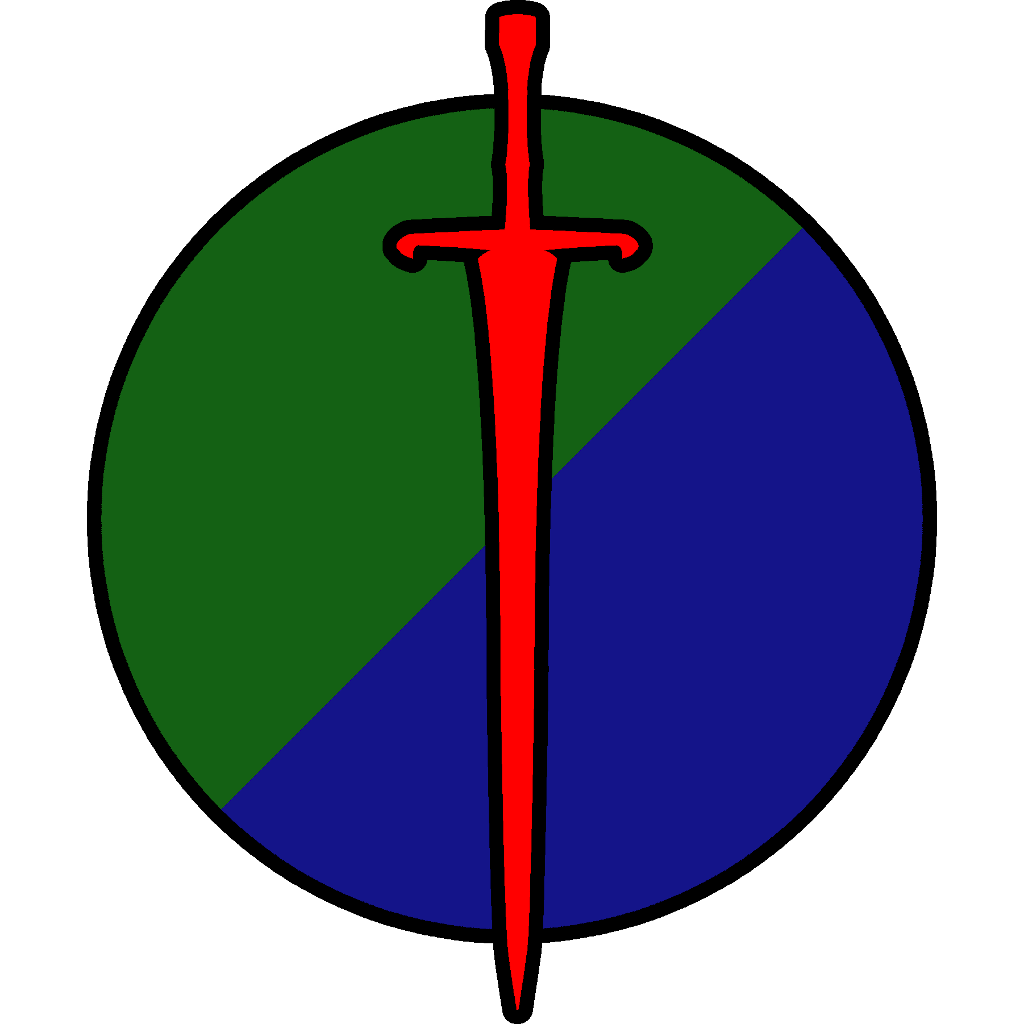VOLUME II, Part 1 - ENTITY CLASSIFICATION
A
Remi
"I... I can't go on. I just can't read another tiny word in this ultra dense book! Tell my mom I love her and tell Anne to stay out of my soda stash!"
A
Zack
"Don't be dramatic. We won't pass the assessment exam if we spend all our time complaining about it."
Author's Note: Luckily for you guys, you get an ultra dense 2500-ish word summary of the whole document instead of suffering through roughly 500 pages like these DDDF candidates are!
2.0 – HISTORY OF ENTITY CLASSIFICATION
In the early days of the Ordo Tuendorum Orbis, anomalous entities were cataloged through classical demonology and local folklore. To the Vatican, everything that wasn't completely human was considered a demon and an enemy of God. Many of the inhuman beings that assisted the order in defeating The Tranquillus were labeled this way. The order quickly broke from church traditions and instead classified them using a different system, classifying beings based on their affiliation with Heaven, Hell, or Nature.
Only beings that were explicitly known to originate from the Infernal Realm were classified as a demon, which were then further classified based on which Demon King they were said to serve. Changelings for example were said to serve Mephistopheles, while Succubi were said to serve Lili. These records were still flawed, as they lacked scientific rigor and often conflated biological species and magical beings under various incorrect categories. Yet these writings laid the groundwork for early catalogs.
Starting in the 18th century, when the Order officially became the DDDF, they started to categorize entities using a 9 digit number (DDDF-###-###-###) that provided zero insight into the entity's nature. Every new entity added to the records was added sequentially. This created problems because different field offices would often use the same numbers, which would create confusion when looking back at older records. Large tomes were published every ten years that had every single possible entity recorded and corrected the double entries, but unless someone knew what to look for, it was rather infuriating to find the correct entry. This system made it nearly impossible to distinguish between anything without consulting mountains of paperwork.
For more information on the failures that led to modernization efforts, consult ART-WPN-001, originally thought to be a harmless copycat of the real thing, it ended up being the actual Caladbolg and killed 148 people when a descendant of Fergus mac Róich handled the relic and accidentally activated its power.
It took until the 1950's for this to change. Several catastrophic failures in identifying and containing threats led to DDDF archivists proposing modern reform. The new system introduced both alphanumeric entity codes and a structured header format, allowing instant recognition of an anomaly’s supertype, subtype, current status, and overall threat level. This modern classification dramatically improved field response times and reduced fatal misidentifications.
Today, this classification system is standard for all DDDF entity records. It has also influenced other supernatural defense organizations globally. When the Supernatural Containment Protocol Treaty of 1982 was ratified, every agency on Earth that dealt with non-humans adopted the same system with the exception of Soviet agencies.
2.1 – ENTITY CLASSIFICATION SYSTEM
To ensure consistency across jurisdictions and interagency compatibility, the Foundation uses a standardized anomaly classification system to identify, record, contain, and manage all known and emerging non-human phenomena. This system provides clear structure for field agents and researchers in tracking immediately important information about any entity they may come across.
2.1.1 – ENTITY SUPERTYPES
Each Entity is assigned one of seven primary supertypes, based on nature and ontological category:HUM
Human Entities: Individuals with magical, cursed, divine, or anomalous bloodlines who retain human DNA signatures. Includes vampires, werewolves, witches, elementals, changelings, fey-touched, elves, and more.
BIO
Biological Non-Humans: Organisms with no human ancestry. Includes cryptids, fey beasts, divine spawn, divine constructs, mundane plants and animals with anomalous traits, and physical organisms not of the planet Earth.
SPC
Spectral and Non-Corporeal Entities: Ghosts, poltergeists, spirit echoes, spiritual residue, and sentient hauntings. Also includes anomalous machine entities and creatures that normally do not interact with the physical world.
ART
Artifacts: Non-biological, non-spectral objects, whether they have been altered via ritual or enchantment, godly blessing or curse, or not. The mere existence of some non-anomalous objects could negatively affect the world and are included.
LOC
Locations: Anomalous locations. Includes temporal anomalies, locations with increased spiritual or magical activity, portals to other worlds, DDDF facilities, and resting places of fallen divine entities.
DIV
Divine Entities: Manifestations of cosmic-level beings and their direct descendants, regardless of if they are beings of Order or Chaos or possible cosmic-level beings of Entropy.
UKN
Unknown: Anomalies with no confirmed classification. Reserved for field-discovered phenomena under active analysis.
Before the SCP Treaty of 1982, various global agencies had their own classification system. For example...
The Supernatural Presence Analysis, Retrieval, and Risk Operations Wing (SPARROW) of Britain's Secret Intelligence Service would classify entities with one of three symbols: A Sword, a Shield, or a Sparrow, then assign a six digit number to it.
The Containment Initiative for Nonstandard Dimensional Entities and Risks (CINDER), a collaborative Intelligence Agency from across Europe, would classify threat levels with the name of a Volcano, from Stromboli as the lowest level, to Santorini as a mid level, to Tambora as the highest level.
The Agencia Burocrática para la Supresión de lo Inexplicable, Demoníaco y Esotérico (ÁBSIDE) from Spain had seven different classification types (known as the Seven Seals), and a threat level, then an additional six digit number.
You may come across these and many others when reading older reports that predate the year 1982. The headers for these older files have the modern DDDF style designation, but text within the file itself will still mention the older numbers. Because of this, details and instructions on reading these older classification systems can be found in Supplemental Volume II-1A.
You may come across these and many others when reading older reports that predate the year 1982. The headers for these older files have the modern DDDF style designation, but text within the file itself will still mention the older numbers. Because of this, details and instructions on reading these older classification systems can be found in Supplemental Volume II-1A.
2.1.2 – ORIGIN CODE AND ID NUMBER
After being assigned a supertype, each anomaly is assigned an origin code or subtype. These three-letter codes are derived from the nature of its bloodline, creator, metaphysical composition, or in absence of that, an associated family name or location the anomaly was found. There are over 17,000 Origin Codes for each Supertype. A Master list of Origin Codes can be found in Supplemental Volume II-2A.
In addition to the origin code, each anomaly is assigned an ID number when it is logged. These numbers are assigned sequentially. ID numbers have nine digits, though unused digits are not displayed beyond the first three. Once an ID number is recorded, it is never reused, even if the anomaly is neutralized or reclassified.
Example Origin Codes
2.1.3 – Status
Status tags indicate the current containment or operational state of an anomaly. These tags are critical for all DDDF personnel to assess threat posture, determine resource allocation, and maintain accurate records across active and dormant anomaly files.FREE
Entity is not in Foundation custody or possession and is existing independently in the world. This does not mean the entity is not actively monitored. This is only the case with LOW and MEDIUM threat entities. HIGH threat entities and above will be aggressively monitored or investigated on occasion. All entities with a FREE classification shall have a Containment Protocol should their future actions put humans in danger.
CONTAINED
Entity is held in a secure facility. CONTAINED entities are continuously monitored and/or investigated with various methods. LOW threat entities can be safely held in common holding cells or standard concrete vaults, while MEDIUM and higher threat entities have detailed Containment Procedures to prevent escape or prevent its anomalous nature from affecting the world around it.
RESTRICTED
Not every Entity can or should be contained due to costs or other issues. Many Entities that are MEDIUM threat or lower can be geographically restricted with a monitoring device. RESTRICTED entities are continuously monitored. SPC type Entities are often easier to contain in place then relocate to a holding facility.
BREACHED
An Entity has either escaped CONTAINED status or was removed from CONTAINED status by an outside force. Requires an immediate escalation in force and use of assets. Containment protocols are put in place immediately.
NEUTRALIZED
Entity has been rendered inert or destroyed and is assessed to be permanently removed as a threat to the DDDF or to humanity. Where applicable, remains are stored for future study. Note that living HUM type entities that are no longer a threat are not classified as NEUTRALIZED. They are instead classified as FREE.
DORMANT
Entity is non-functional but may reactivate due to a future event. This Tag is also used if a threat is rendered inert or destroyed in some way but a NEUTRALIZED status cannot be confirmed.
UNKNOWN
Entity status cannot be determined or is unverifiable. Common for Entities reported to the DDDF but not yet investigated. Also Common to Entities with novel abilities yet to be documented and studied. This is sometimes used in place of the BREACHED status if the entity's status is no longer CONTAINED but cannot be immediately confirmed.
2.1.4 – Threat Level
Threat Level indicates the potential destructive power of an entity. It does not matter how peaceful or inert an entity is. If it has the potential to cause elevated levels of destruction then it shall be classified as such. These tags are critical for all DDDF personnel to assess threat potential and determine resource allocation. When Threat classifications were first being proposed, the vocabulary went through more revisions than the other types before the DDDF settled on a system that is simple and easy to understand.LOW
LOW threat entities pose negligible risk to life and property under normal conditions. Entities with this classification are stable, non-hostile, and possess bloodline abilities that are not immediately life threatening.
MEDIUM
MEDIUM threat Entities have the potential to cause significant localized damage and possess abilities that are life threatening to people around them.
HIGH
HIGH threat Entities pose significant risk to life and property, with the potential to destroy small cities and towns.
CATASTROPHIC
CATASTROPHIC threat Entities represent a significant risk to larger cities and even entire countries under certain conditions.
APOCALYPTIC
APOCALYPTIC threat Entities have Earth shattering potential. More powerful APOCALYPTIC threat Entities can destroy the entire universe, though that matters little as any APOCALYPTIC threat entity requires the response of the entire might of the DDDF.
UNKNOWN
It is rare for an entity to have a threat level of UNKNOWN. Centuries of precedent and tens of thousands of documented entities gives the DDDF an excellent base to start with when classifying entities. Even so, every year there are hundreds of entities the DDDF comes across that defy all known logic and must be properly studied before a threat level can be assigned.
Remi
"Ugh, these classification names are so boring!"Zack
"As opposed to what? They make sense."
"I don't know, like, maybe instead of CATASTROPHIC, we go with... RAMIEL or something!"
"Really? You want to use THAT reference?"
"Not only that! It also sounds soo... esoteric and cool!"
Dusk
"Remi, the classification system is made to convey as much information as possible that can be understood quickly and easily by everyone. This word, "Ramiel", does none of those things."
"Fine, whatever! It was just a cool thought! It's just weird that for being a cool secret-ish organization we don't use more hidden code words for this sort of thing."
"Overusing secret code words and phrases get people killed Remi. Clarity saves lives."






Comments